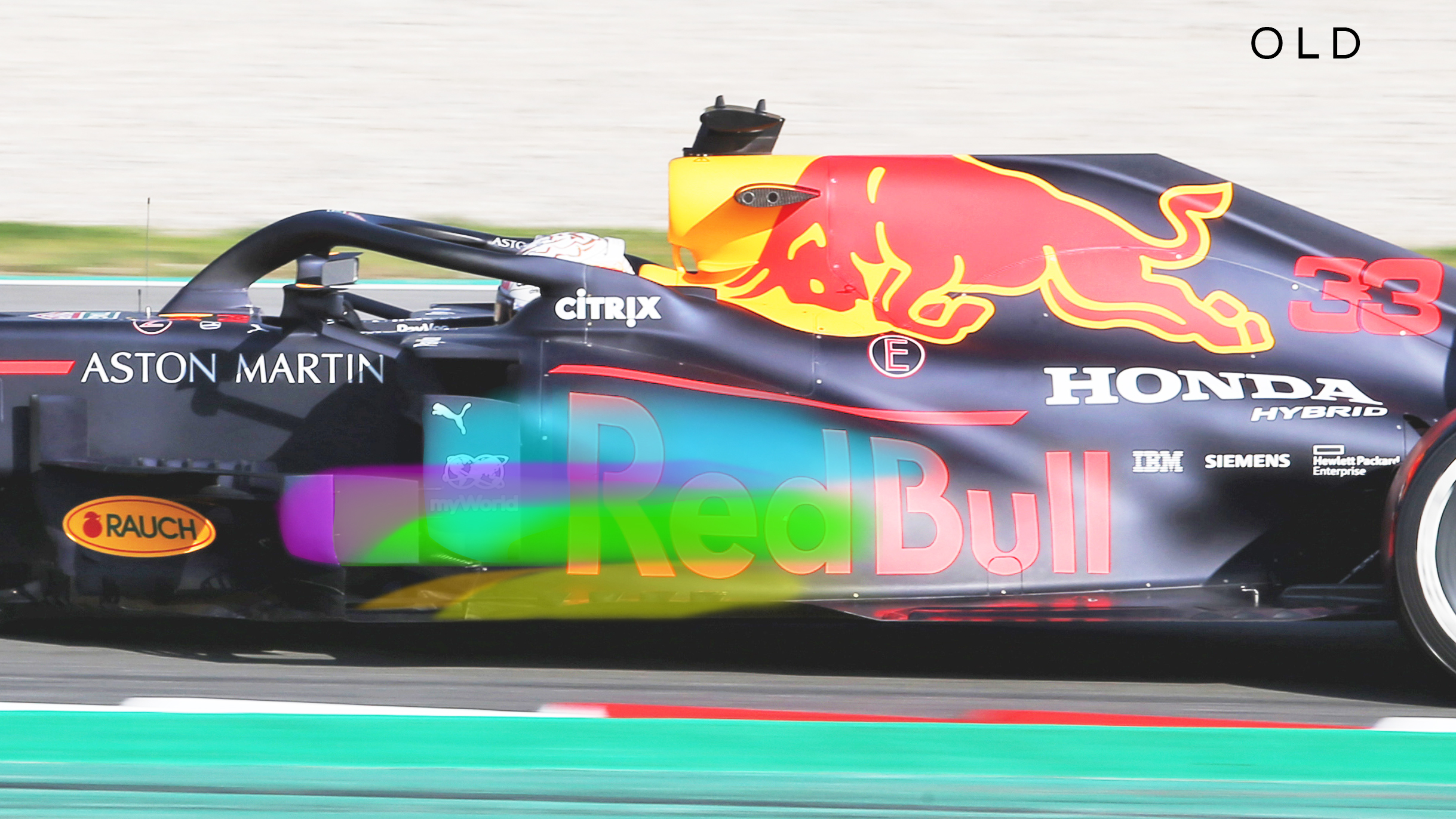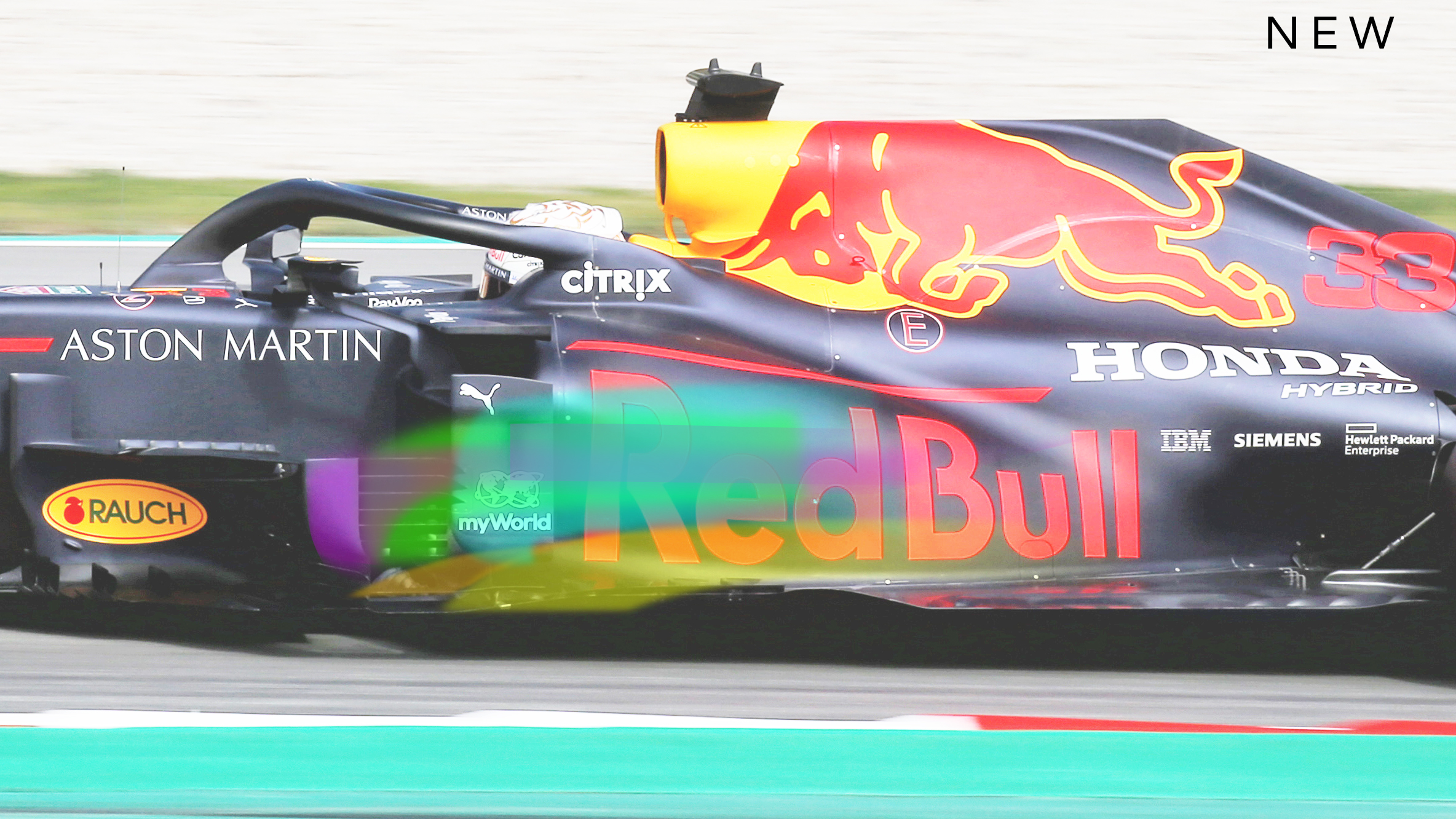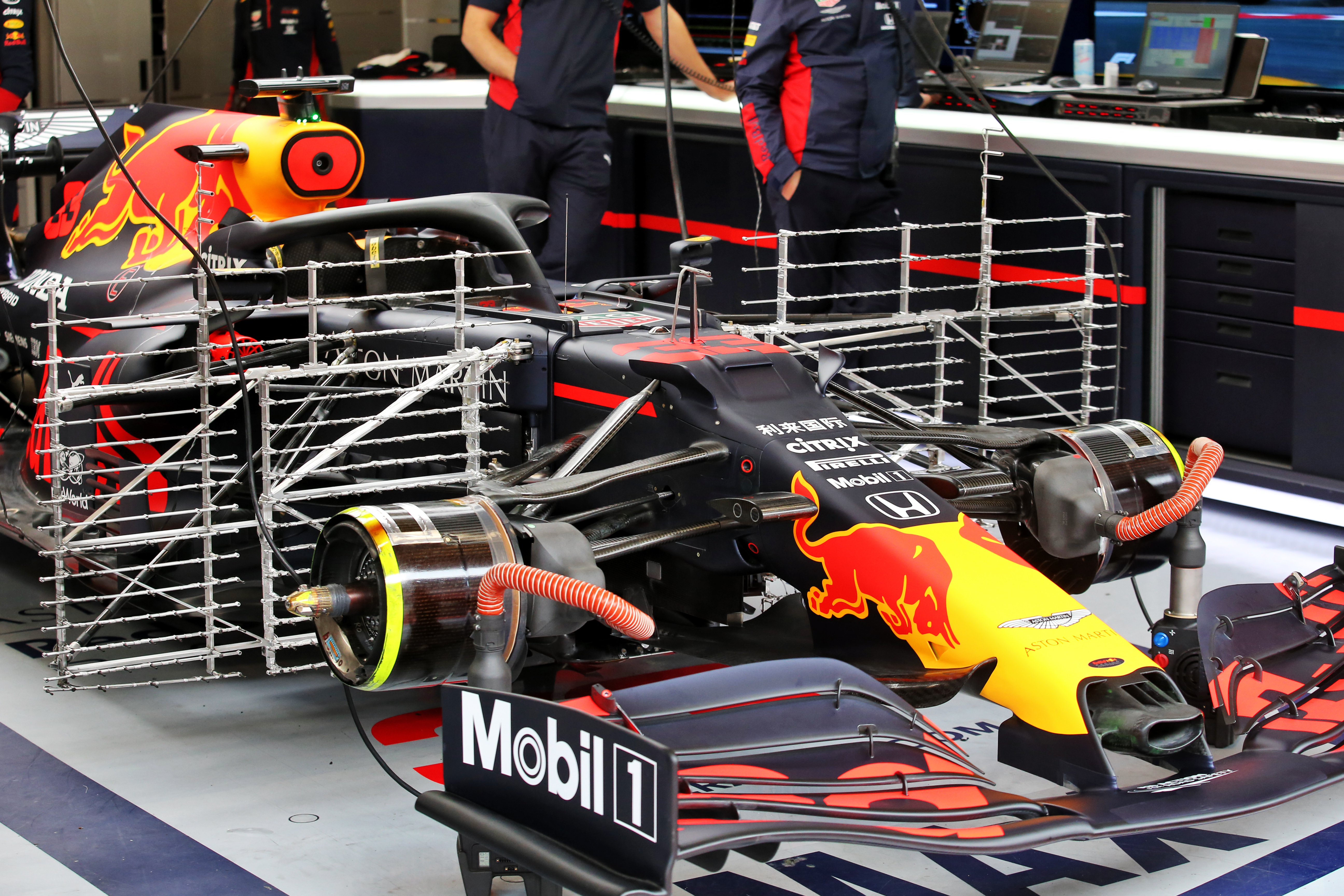Up Next

Red Bull introduced an upgrade package during the second day of the final pre-season Formula 1 test that includes a dramatic bargeboard change.
By dramatic, that means it might add up to a performance gain of two-tenths of a second, which while not a huge amount is a lifetime for an F1 car.
One of the objectives of the bargeboard package is to optimise the underfloor performance.
There is an area at the front of the underfloor where the car produces downforce in its own right, these floors outer edges turn upwards for the first 50 centimetres or so acting as a small diffuser, but the radius that’s allowed in the regulations is limited.
The rest of the underfloor performance is influenced more by the diffuser which works the airflow harder and improves the downforce of the rest of the car.
Red Bull’s old package was mainly about turning the airflow around the sidepod, indicated by the blue-highlighted flow coming off the main vertical vane.

That vane has been talked about for a long time as being there to tidy up the front tyre wake, but while that’s still true to an extent it’s not so critical for that nowadays as it’s more important to take the airflow and turn it around the sidepod front corner.
The magenta-highlighted airflow is from another vertical vane that is further forward, adding to the airflow going round the side of the car.
The green-highlighted airflow is created by a domed radius shape on the bottom of one of the vanes and turns the airflow upwards.
This, in turn, pulls the yellow airflow out from underneath the floor and helping to create downforce from the front corner of the underfloor.
Red Bull has tried to be more aggressive with the new bargeboard package by introducing a vertical vane with a lot of louvres in it.

Now, the airflow hits that and is turned upwards – indicated by the green area where the airflow is turning outwards.
The blue area is minimised as a result because there isn’t so much of a vertical bargeboard anymore.
But there is a slot gap in what was originally the vertical bargeboard, which you can see highlighted in the middle of the green that is pulling more airflow through the slot gap.
This means the yellow airflow being sucked from underneath the car is increased. It’s similar with the orange airflow, which comes through a horizontal slot gap on the floors upper surface.
By pulling more airflow from underneath the car, you are trying to create more leading edge underfloor downforce, which is more central on the car so also works a little bit on the front and helps with downforce there.
In turn, this allows the diffuser to work harder where it kicks up, which is where the big increase will be in rear downforce.
All of this is a pretty big change a lot of componentry to just try and drag more airflow through that section and if you could just have a bigger radius of better diffuser, you would.
But everyone is at the maximum radius in this area and have the maximum diffuser areas so all developments in this area are about trying to intensify the yellow airflow, which will give you more overall downforce.

Red Bull’s upgrade also includes changes under the nose behind the front wing.
On the rear corners at the back of the cape under the nose, they have added two vertical turning vanes, these are turning the airflow outwards earlier setting up the flow for the bargeboards to optimise.
The whole structure of the airflow comes inwards as it goes around the leading edge of the nose, tries to tuck itself under the nose to the central keel so you get the maximum flow between the front wheels and then at the back of that you want to start to turn it outwards.
That’s what the bargeboards are there for, they pull that airflow out from underneath the chassis and increase its airspeed as much as you can before presenting it to the leading edge of the underfloor.
They still retain the two little cape corner ducts in the undersurface, working together with these new vertical vanes they are trying to create a vortex and that vortex will pull hard on that airflow and pull it outwards.
Red Bull has also made minor tweaks to its front wing.




